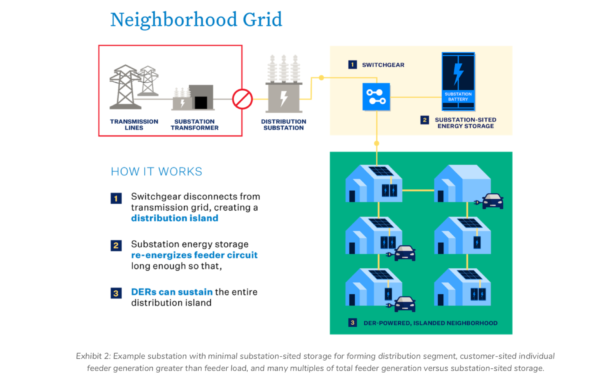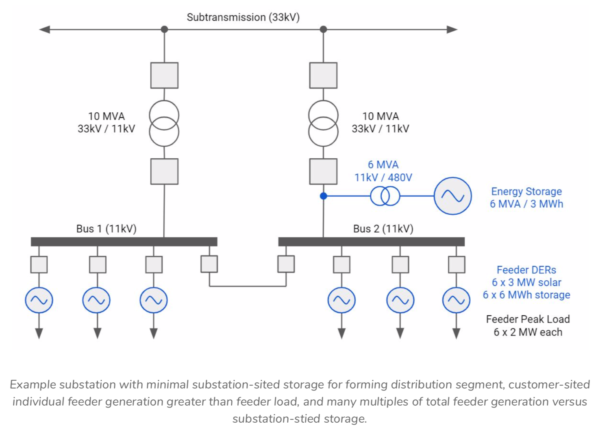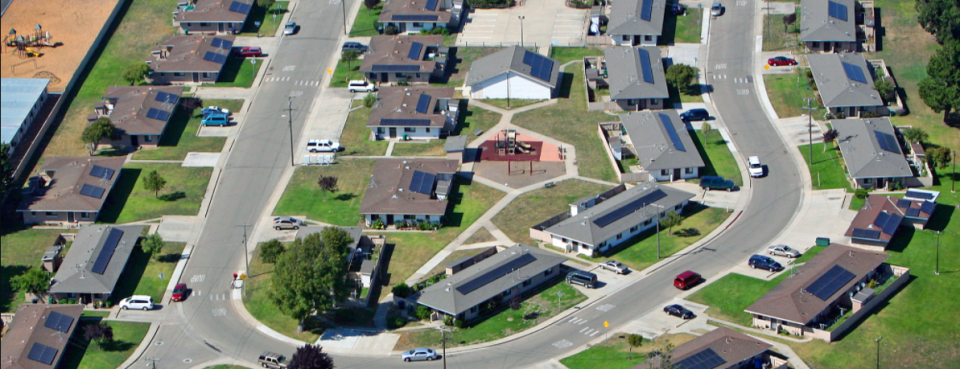Directly challenging the bankrupt utility’s system reliability request for proposals, Sunrun has released a paper outlining a renewable alternative: distribution islands with solar and battery backup.
In response to a Pacific Gas and Electric system reliability request for proposals calling for “renewable natural gas substation-level microgrids,” third-party solar giant Sunrun has published a concept paper outlining how distributed energy resources can reliably supply the same services as those gas-powered microgrids
After a disastrous fall and winter marred by the company’s Public Safety Power Shutoff (PSPS) events, PG&E issued the aforementioned request for proposal (RFP) in order to alleviate the strain on the company’s aging and failing transmission and distribution system.
The paper was authored by Sunrun employees in the Energy Services and Grid Solutions departments and reviewed by a senior engineer at the National Renewable Energy Laboratory, Andy Hoke, and director of electric grid research at the California Institute for Energy and Environment and a faculty scientist at Lawrence Berkeley National Laboratory, “Sascha” Alexandra Von Meier. A number of renewable energy advocates took exception to the RFP as well.
“We wanted to imagine a world where a large majority of customers do have rooftop solar,” shared VP of energy services at Sunrun and paper co-author, Dr. Audrey Lee. “In that future, how can we help not only our customers, but their neighbors as well?”
This led the authors to their preferred solution: distribution circuits, supported by consumer-sited distributed energy resources (DERs) and an initial battery bank used to start the re-energization process.

The paper presents a more futuristic outlook than PG&E’s RFP, a fact cited by the authors. In introducing the concept, the group identifies the needs for further research and technological advancements, as well as a rapid increase in the adoption of distributed energy resources.
Lee said that since the implementation of the PSPS, Sunrun has seen a battery attachment rate of upwards of 30% for all new solar installations, a higher figure than normal.
“In an outage situation, our customers who do have rooftop solar and batteries can island from the grid and can maintain power and backup their critical load, but their neighbors cannot share their power directly,” continued Lee. “The idea is that we build a grid that can sectionalize much more easily when there’ s a wildfire risk and portions of the grid need to be shut down.”
The idea is to disconnect distribution substations from the transmission grid during planned outages and use energy stored in batteries at the distribution substation to re-energize individual distribution circuits on the local level. This re-energization would be triggered by a substation-sited energy storage installation, be that a traditional lithium-ion battery or other technologies like fuel cells or flywheels.
The authors outline what a system under the distribution substation solution would look like.

Though not the first to make this argument, Lee has become accustomed to the idea that the energy grid as we know it is ripe for change:
The traditional model of a centralized grid with power going from these centralized power plants to transmission and distribution systems and finally to the home may not be the right model any more.
The paper calls the distribution substation solution the preferred scenario of the three developed to alleviate the resiliency and safety issues plaguing PG&E’s grid. The other potential solutions involved either wholesale upgrades to transmission and distribution infrastructure with solar and storage providing grid services or individuals investing in personal backup without any utility support.
The proposed solution would be less expensive in implementation than transmission and distribution upgrades, while not taking nearly as long as some potential transmission and distribution upgrades, such as burying lines. In opposition to personal backup, the disconnected distribution substation solution would ideally ensure that no customers are left in the dark while eliminating the need for gas generators as a backup source.


